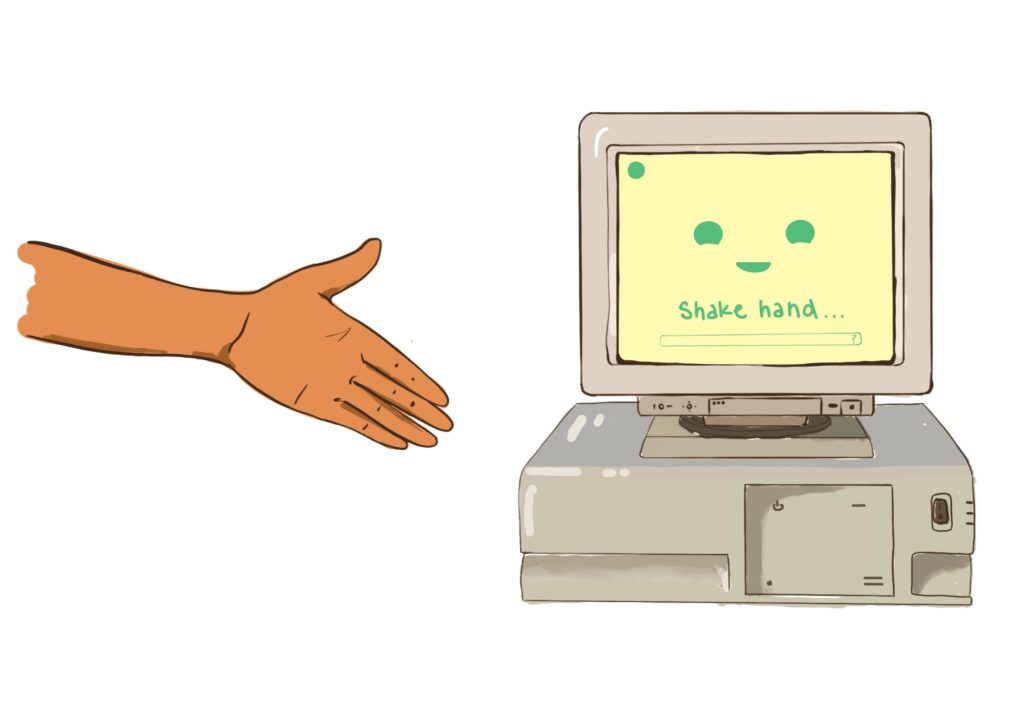Ashley Ta ’27
Copy Editor Intern
In a YouTube video discussing the AI revolution, Vox producer and video journalist Cleo Abram said, “Instead of giving a computer a rigid set of rules where if this happens then these are the possible outcomes, you give a computer inputs and outputs and allow it to create the rules themselves, rules that we wouldn’t have come up with, or maybe rules we don’t even understand.” In other words, we have left the world of human-generated algorithms that the machine follows and have entered the eye-blinking, backflipping world of machine learning.
On Mar. 14, 2023, ChatGPT-4, the latest version of the large language model GPT, launched. Besides being able to score 298/400 on the Bar exam (260-280 is a passing score), its most notable difference from previous versions is image analysis. It can generate a meal from a picture of the items in your fridge, help visually impaired people navigate, and help Duolingo teach people languages, according to Abram. Writing and Rhetoric professor Kimberly Drake mentioned that there’s even an OpenAI model that can “write things in your own style … so it doesn’t have the telltale robotic tone.”
In the years BCE (Before ChatGPT Evolved), a liberal arts education was created to nurture the articulation, critical thinking, and love of learning in its students. But now, years later, we ask the same old questions: will we still have our own thoughts when we don’t have to? How will ChatGPT impact our liberal arts education?
People forget that ChatGPT has a limited source of knowledge, resulting in issues such as faulty text summaries. The model sometimes provides quotes that are not from the original text. This tendency to create plausible-sounding conclusions to please the user is called hallucinations.
“In fact, generating content is probably [ChatGPT’s] weakest function,” said Dr. Steve Watson, in a joint interview with fellow University of Cambridge education professor Dr. Vaughan Connolly. “Where it excels is at manipulating structure and form.”
Despite ChatGPT’s ability to rephrase writing for concision and style, professors still want students to learn from the process of revising and improving their writing. One Scripps course syllabus discourages using AI tools for assignments but says to include ChatGPT as a reference if used. Drake’s writing curriculum focuses on de-emphasizes grades in favor of assigning “scaffolded” draft work, detailed feedback, and repeated revision to create a learner-friendly environment.
“I want students to be excited about their writing and if they’re not, that’s something I need to work on,” Drake said. Other 5C syllabi from the spring 2024 semester stated that ChatGPT cannot be used for any reason at any time for the course.
However, many college students have found non-writing uses for ChatGPT. An anonymous HMC student on the college’s Honor Board for academic dishonesty reported that many students use ChatGPT to debug their code instead of “spending many hours looking for coding errors,” a chore the average computer science student is eager to hand off to AI. But the HMC student reasoned that you shouldn’t let ChatGPT debug your code if you don’t already know how to do it yourself because you’re losing the process of learning how to do so.
Both the HMC student and Drake acknowledge how infrequently liberal arts students at the 5Cs actually use ChatGPT in academically dishonest ways. Regardless, Watson and Connolly see that trying to ban it will become impossible as it progresses rapidly. If anything, it seems more likely that ChatGPT will demand more out of our liberal arts education by fostering learners who will harness their creative skills instead of being replaced.
Image Source: Audrey Green ‘27



